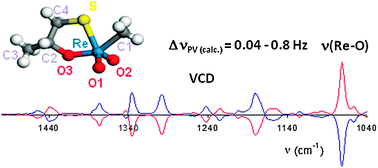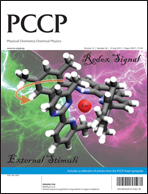A chiral rhenium complex with predicted high parity violation effects: synthesis, stereochemical characterization by VCD spectroscopy and quantum chemical calculations†
Abstract
With their rich electronic, vibrational, rotational and hyperfine structure, molecular systems have the potential to play a decisive role in precision tests of fundamental physics. For example, electroweak nuclear interactions should cause small energy differences between the two enantiomers of chiral molecules, a signature of parity symmetry breaking. Enantioenriched oxorhenium(VII) complexes S-(−)- and R-(+)-3 bearing a chiral 2-methyl-1-thio-propanol ![[double bond, length as m-dash]](https://www.rsc.org/images/entities/char_e001.gif) O stretching. Although the rhenium atom is not a stereogenic centre in itself, experimental
O stretching. Although the rhenium atom is not a stereogenic centre in itself, experimental ![[double bond, length as m-dash]](https://www.rsc.org/images/entities/char_e001.gif) O bond stretching mode signal. The calculated VCD
O bond stretching mode signal. The calculated VCD


 Please wait while we load your content...
Please wait while we load your content...